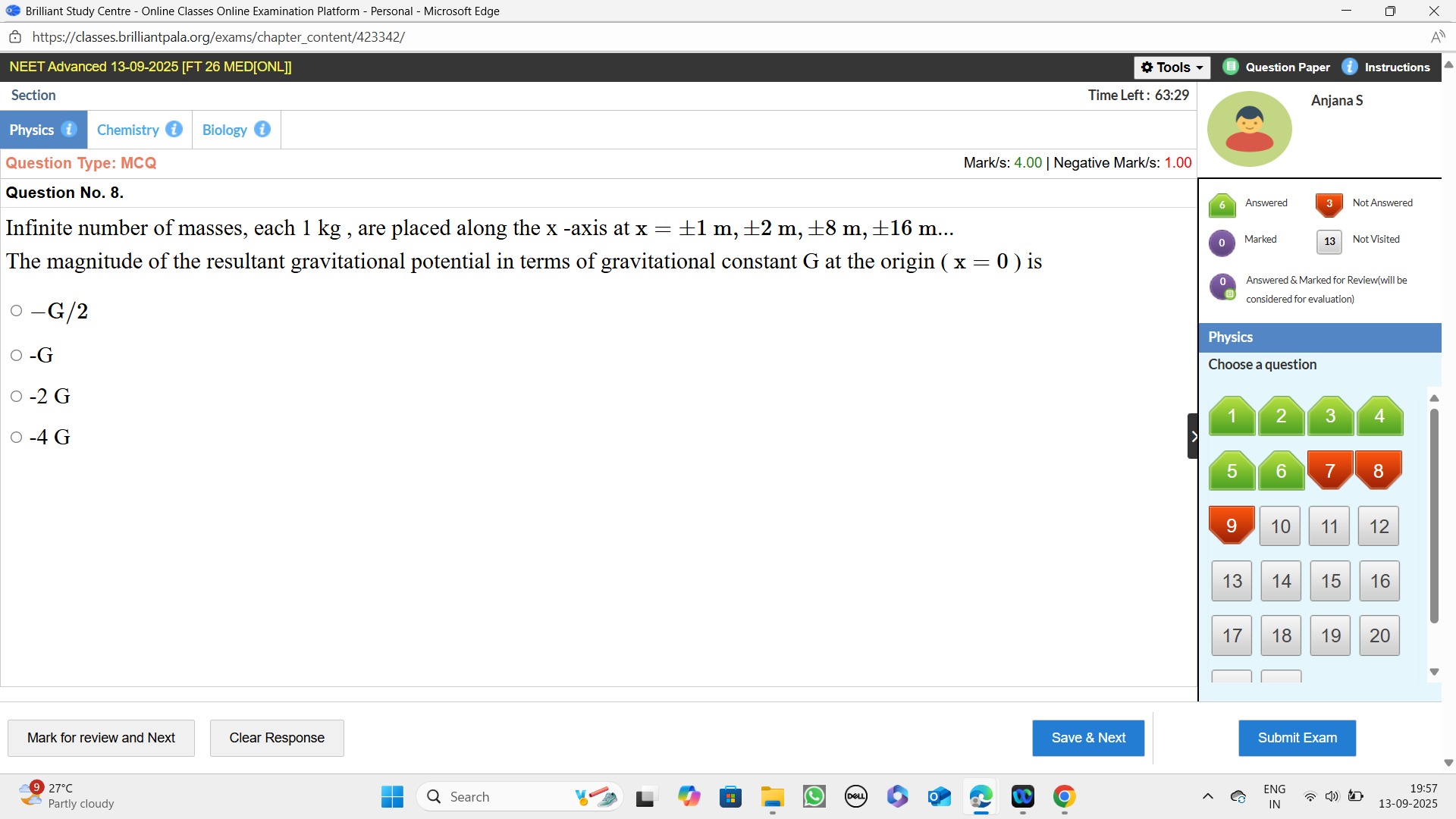Question
Question: Infinite number of masses, each 1 kg, are placed along the x -axis at x = ±1 m, ±2m, ±8 m, ±16 m... ...
Infinite number of masses, each 1 kg, are placed along the x -axis at x = ±1 m, ±2m, ±8 m, ±16 m... The magnitude of the resultant gravitational potential in terms of gravitational constant G at the origin (x = 0 ) is

-G/2
-G
-2 G
-4 G
-4 G
Solution
The gravitational potential V at a point due to a point mass m at a distance r is given by V=−Grm. Since gravitational potential is a scalar quantity, the resultant gravitational potential at a point is the algebraic sum of the potentials due to all individual masses.
The masses are placed at x=±1 m, ±2 m, ±8 m, ±16 m, ... . Each mass is m=1 kg. The distances of these masses from the origin (x=0) are r=1,2,8,16,... meters. For each positive distance d, there is a mass at +d and a mass at −d.
The total gravitational potential at the origin is the sum of potentials due to all masses: Vtotal=∑all masses−Grm Given m=1 kg for all masses, this becomes: Vtotal=−G(11+21+81+161+...)−G(∣−1∣1+∣−2∣1+∣−8∣1+∣−16∣1+...) Vtotal=−2G(11+21+81+161+...)
The sequence of distances 1,2,8,16,... suggests a pattern related to powers of 2. Assuming the intended sequence of distances is a geometric progression 20,21,22,23,24,..., i.e., 1,2,4,8,16,.... The sum of the reciprocals of these distances is an infinite geometric series: S=11+21+41+81+161+... This is a geometric series with the first term a=1 and the common ratio r=1/2. The sum of an infinite geometric series is given by S=1−ra. S=1−1/21=1/21=2.
Substituting this sum back into the expression for Vtotal: Vtotal=−2G×S=−2G×2=−4G.
The question asks for the "magnitude of the resultant gravitational potential". The calculated potential is −4G. If "magnitude" implies the absolute value, it would be ∣−4G∣=4G. However, 4G is not an option, and all options are negative. This indicates that the question is likely asking for the value of the resultant gravitational potential itself, and the term "magnitude" might be used loosely or in the context of the negative sign being inherent to gravitational potential. Therefore, we choose the option that matches the calculated potential value.
